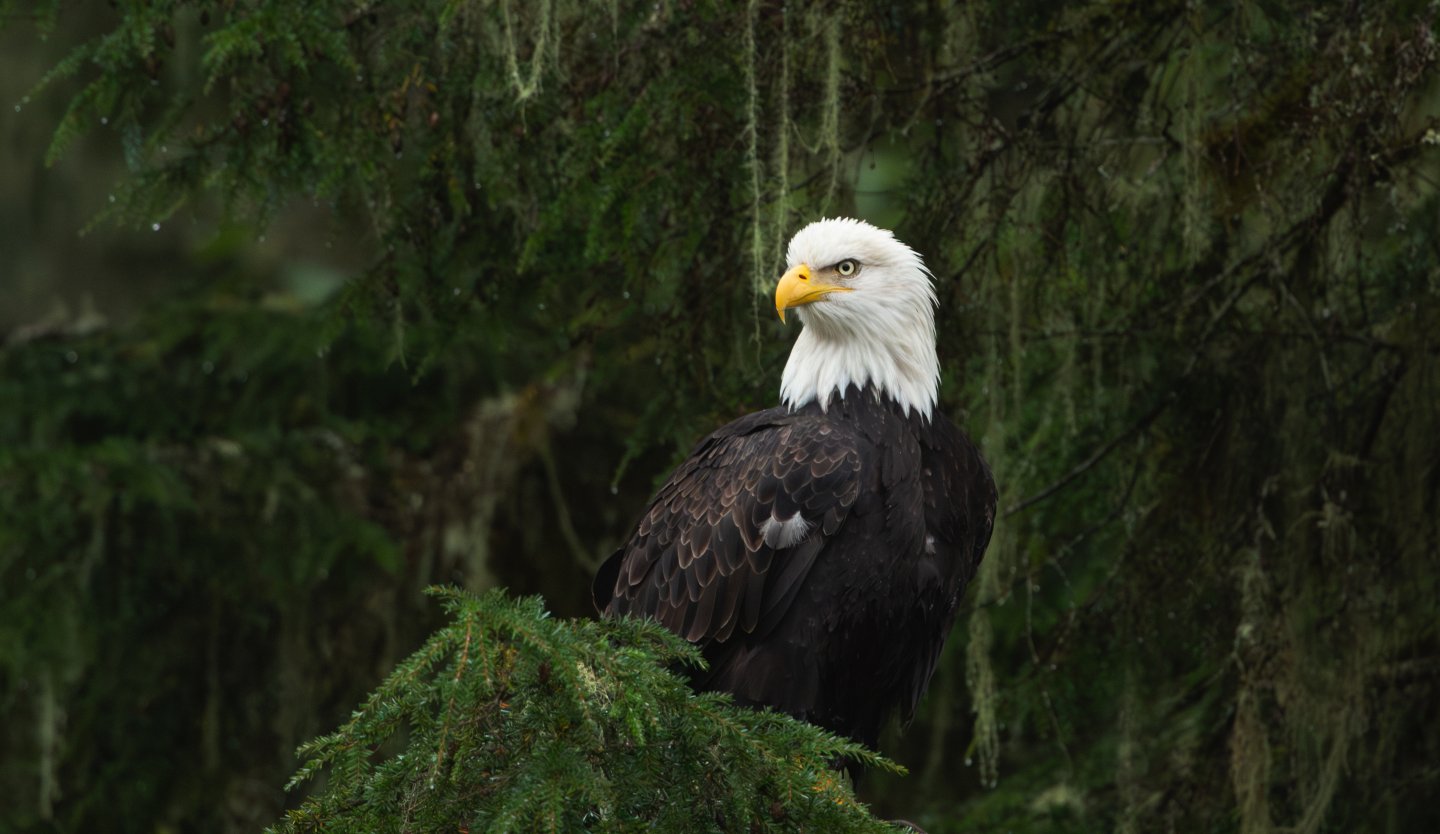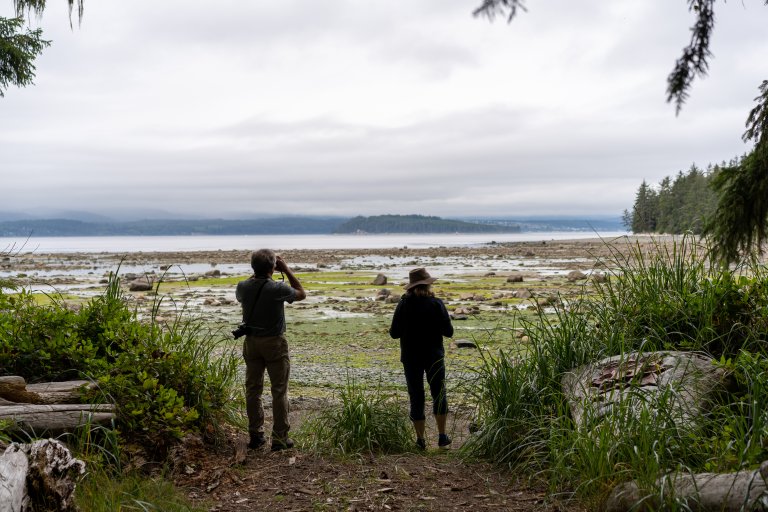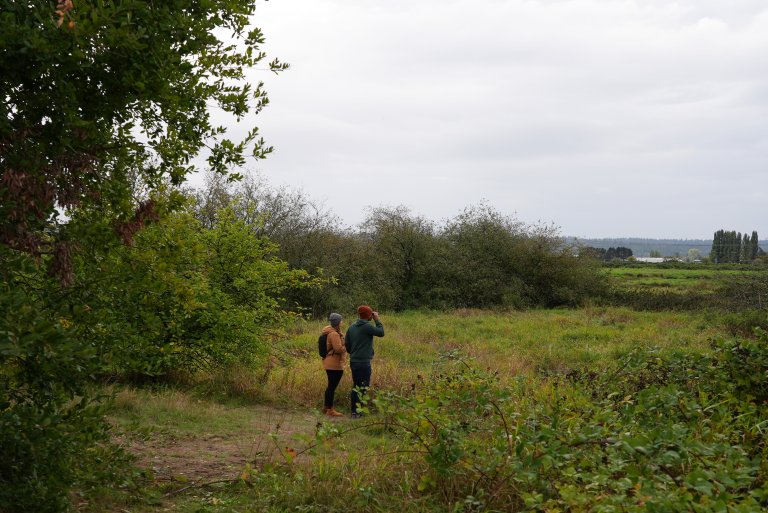Every year, hundreds of Canada’s most iconic raptor gather along the shores of the picturesque Squamish River in the community of Brackendale. Bald Eagles, famous for their striking white heads and unparalleled hunting capabilities, flock to the region to take advantage of one of nature’s most abundant annual events: the Salmon Run.
Motorists along the Sea to Sky Highway can often pass right by this world-famous spectacle, unaware of the natural marvel taking place at the river’s edge. Fortunately, the BC Bird Trail has uncovered all the information you need to take a detour that is sure to impress even the most seasoned bird enthusiast. As you plan your next visit to the Sea to Sky region, read on to discover how to responsibly observe the eagles during your trip.
Biology and Annual Migration Patterns of the Bald Eagle
Before we explore when and where to observe the majestic Bald Eagles, let’s first delve into their biology and learn about what draws them to the banks of the Squamish River each fall.
The Bald Eagle (Haliaeetus leucocephalus) ranks among North America’s most instantly recognizable raptor species, with their distinctive white head and tail plumage providing a stark contrast to the deep brown of their bodies. Frequently observed in mated pairs, the female of the species is approximately 25-30% larger than the male, weighing up to 12 pounds and sporting a wingspan of up to 8 feet. While the Bald Eagle belongs to the larger Sea Eagle (Haliaeetus) family, it is the only eagle that is native exclusively to North America thus contributing to its prominent place in popular culture.
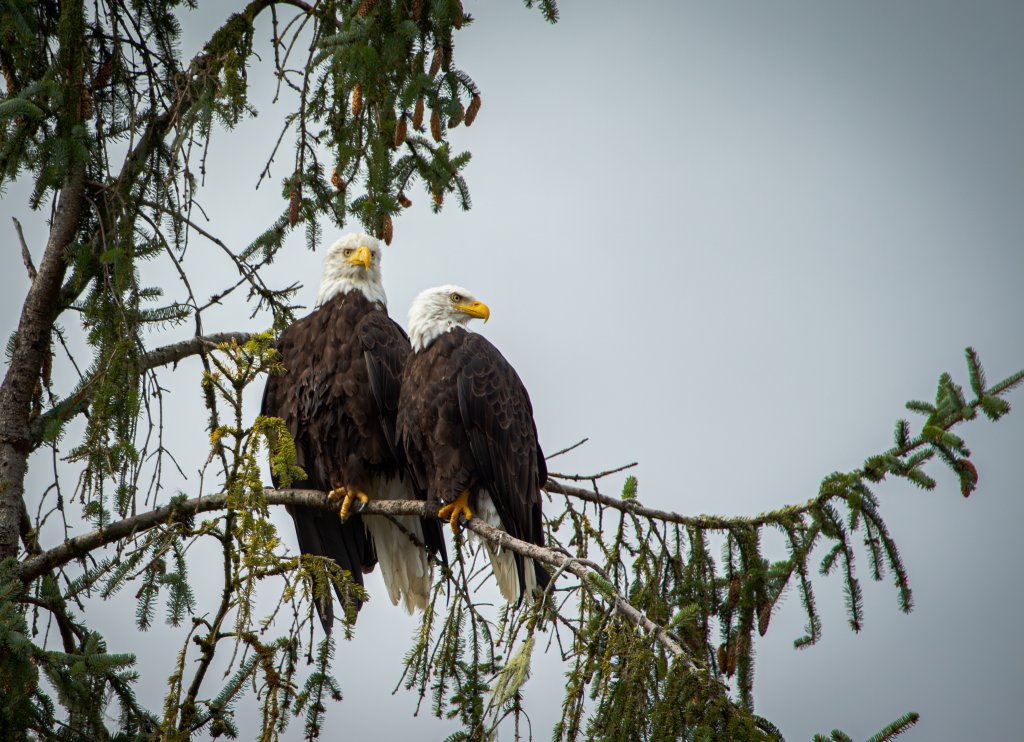
The Bald Eagle’s piercing eyesight is one of its most renowned attributes, with the ability to spot fish in a river from heights of up to 500 meters, a testament to its remarkable visual acuity. Their sharply hooked talons and skilfully adapted grip allow them to capture prey mid-flight, a truly spectacular sight.
Bald Eagles are opportunistic feeders who prefer to feast on fresh fish when available but do not hesitate to consume carrion if it’s on offer. Starting in spring, Bald Eagles migrate north to their breeding grounds, often returning to nests used in previous years. Here, bonded pairs will work together to rear their young, with both parents tending to the nest and hunting for food. As summer draws to a close and the northern waters begin to freeze over, Bald Eagles start their journey southward in search of a winter haven, and this is where the abundant estuary of the Squamish River plays a vital role in their annual migration.
The Squamish River Eagles
Starting in late October, the waters of the Squamish River begin to come alive with the annual abundance of the Salmon Run. Host to all 7 species of Salmon and Salmonid that can be found along the Pacific Coast of North America, fish can be found in the Squamish River year-round, but it is not until the rains of October that the numbers start to spike. Returning Coho and Chum salmon begin to make their way from the scenic Howe Sound up through the Squamish Estuary towards smaller tributaries such as the Cheakamus or Mamquam rivers in search of their native spawning grounds, and it is along this journey that the Bald Eagles are patiently waiting.
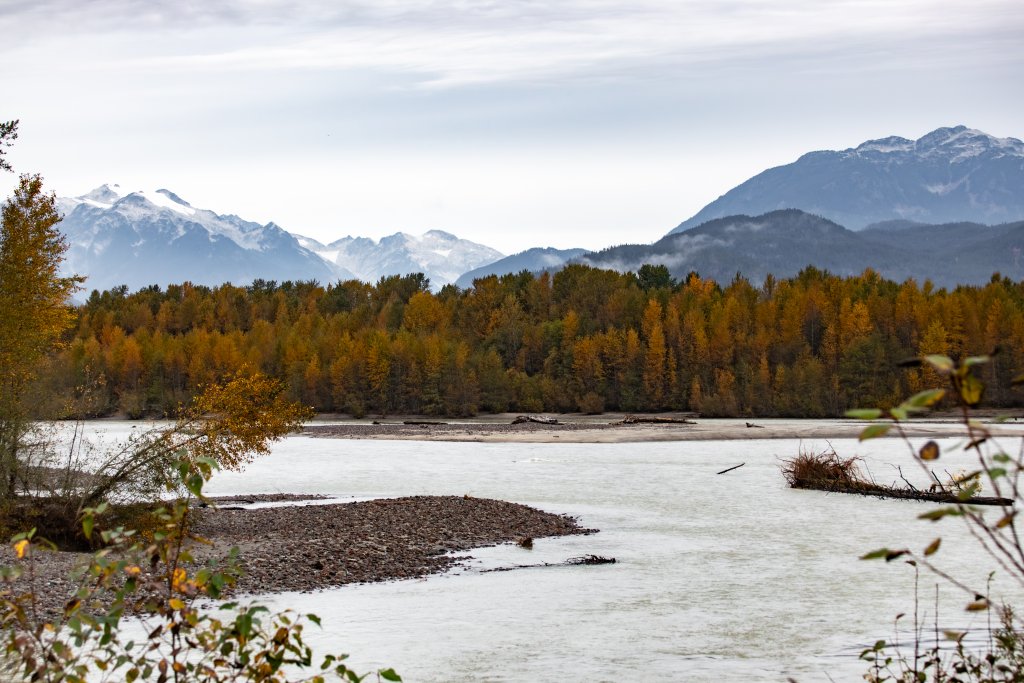
With the cooler temperatures, Eagles start to gather in Squamish to await the Salmon’s return. Visitors can expect to see numbers increasing throughout the month of November, often peaking in early December before dropping off as the salmon run winds down in January. This annual marvel has been keenly observed by local conservation group EagleWatch since 1995 following the world record count in 1994 that saw 3,769 eagles in the region. In 1999, the area along the western banks of the Squamish River Estuary, where the Eagles rest between feedings, was designated as the Brackendale Eagles Provincial Park. Access is strictly prohibited during the winter months to ensure the preservation of this critical habitat.
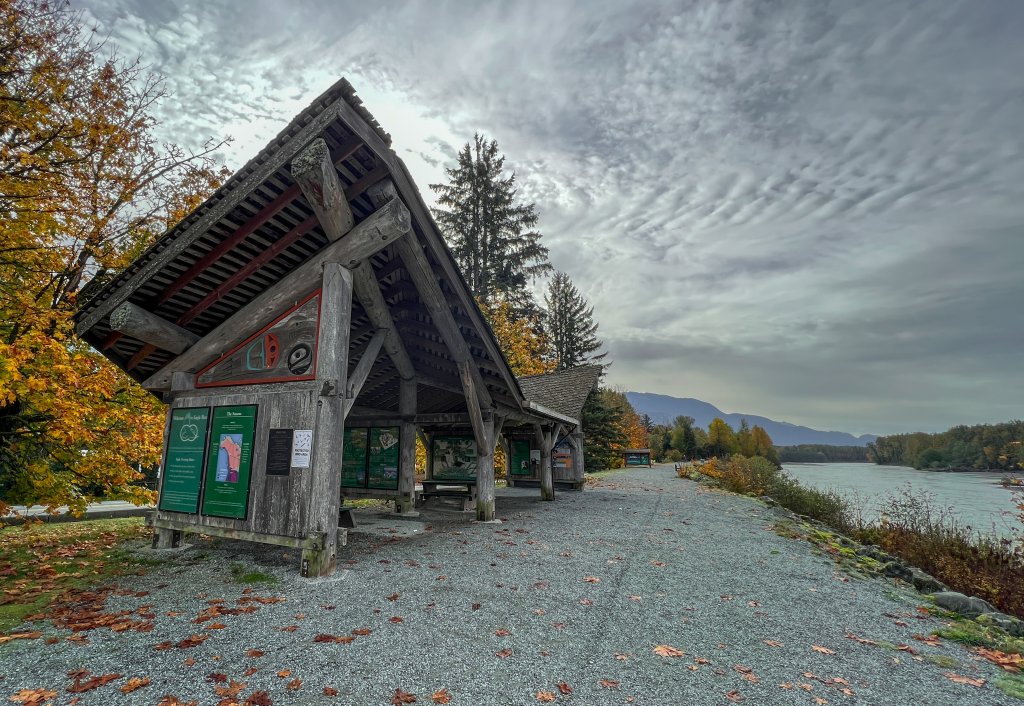
Fortunately for bird enthusiasts, there are several locations to respectfully view this spectacular sight that are easily accessible from the community of Squamish. The best of these locations is the Eagle Run Vista Viewpoint, which is featured as part of the Squamish Itinerary of the BC Bird Trail. The viewpoint features a smooth gravel path along the riverside dike which leads to a large shelter filled with interpretive signs about the eagles and stunning views of the river and the mountains beyond. During peak months, the viewpoint is also where you will find the dedicated volunteers and friendly interpreters from the EagleWatch program, who visit the area daily from 10 am-3 pm.
The EagleWatch Program
The EagleWatch Program, established in 1995, is operated by the Squamish Environment Society, with support from the Province of British Columbia, the District of Squamish, and WhenToHelp. The dedicated volunteers from the EagleWatch program are present at the Eagle Run Vista viewpoint every day from early November through January, conducting surveys in the morning and the afternoon to assess the numbers and behaviour of the Bald Eagles. The friendly and knowledgeable volunteers often have high-powered scopes to assist in wildlife viewing, and the interpreters are always eager to share interesting facts with inquisitive birdwatchers. The detailed survey data collected by the volunteers provides crucial information about the eagle population and documents any potential disturbances observed, such as people or pets entering the riverbed.
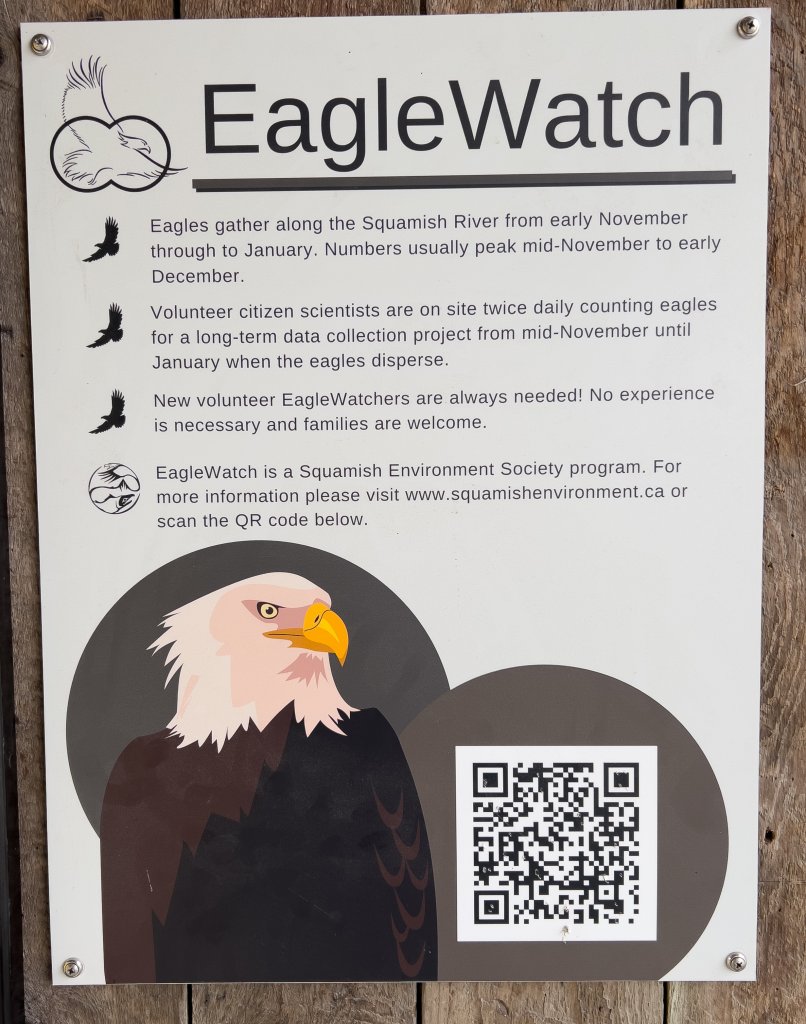
Be an Ethical Eagle Observer
Bald Eagles require a high caloric intake to sustain them, and a bird that is disturbed during feeding is unlikely to return to its meal resulting in a devastating loss of calories. Ethical eagle viewing ensures the Squamish eagles continue to return year after year. Please follow these viewing practices to do your part to conserve the Eagle population:
- Keep your distance: Do not approach an eagle you see feeding on the shore. An eagle who is forced to leave its food may not return to it, and it needs to conserve energy to survive the winter
- Do not use drones: Use binoculars or telephoto lenses to get a closer look
- Stay on the dykes: Please do not walk on the gravel bars or private land
- Keep dogs on a leash: Do not let dogs chase wildlife
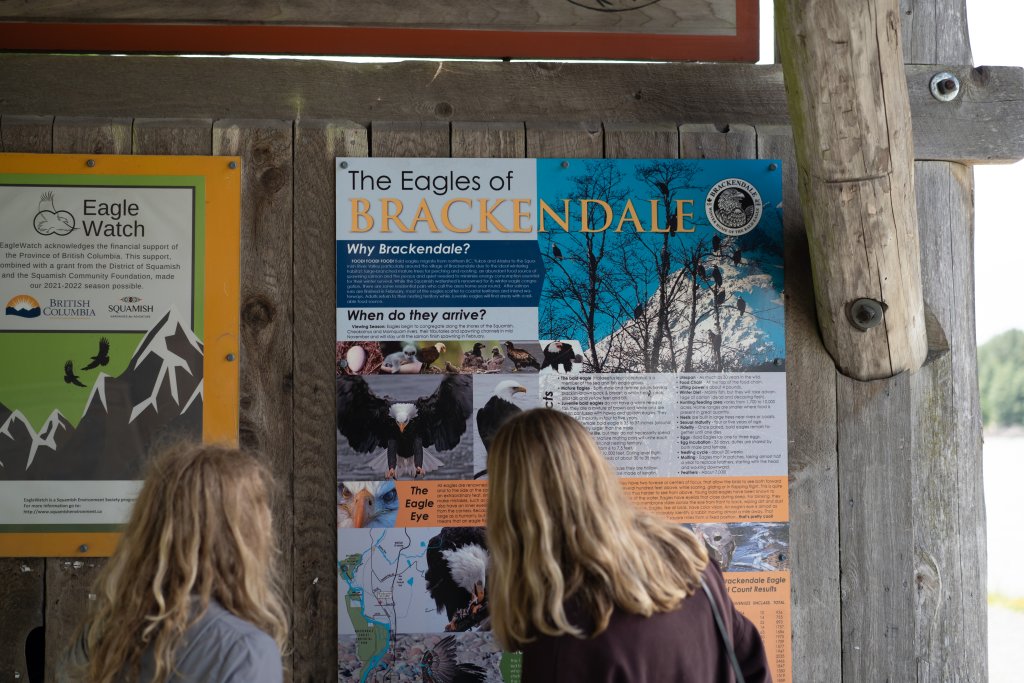
When visiting Squamish during the fall and winter, be sure to include a stop to witness the annual gathering of Eagles. Remember to dress warmly, bring binoculars, and adhere to ethical eagle observation practices. Take advantage of the knowledgeable interpreters from EagleWatch to enhance your understanding and learn about current sightings. Bald Eagles are one of Canada’s most beloved raptor species and watching them fishing for salmon is a bucket-list experience for many visitors to the region. Embrace the changing of the seasons as you experience the excitement of the salmon run along the banks of the Squamish River this fall.
